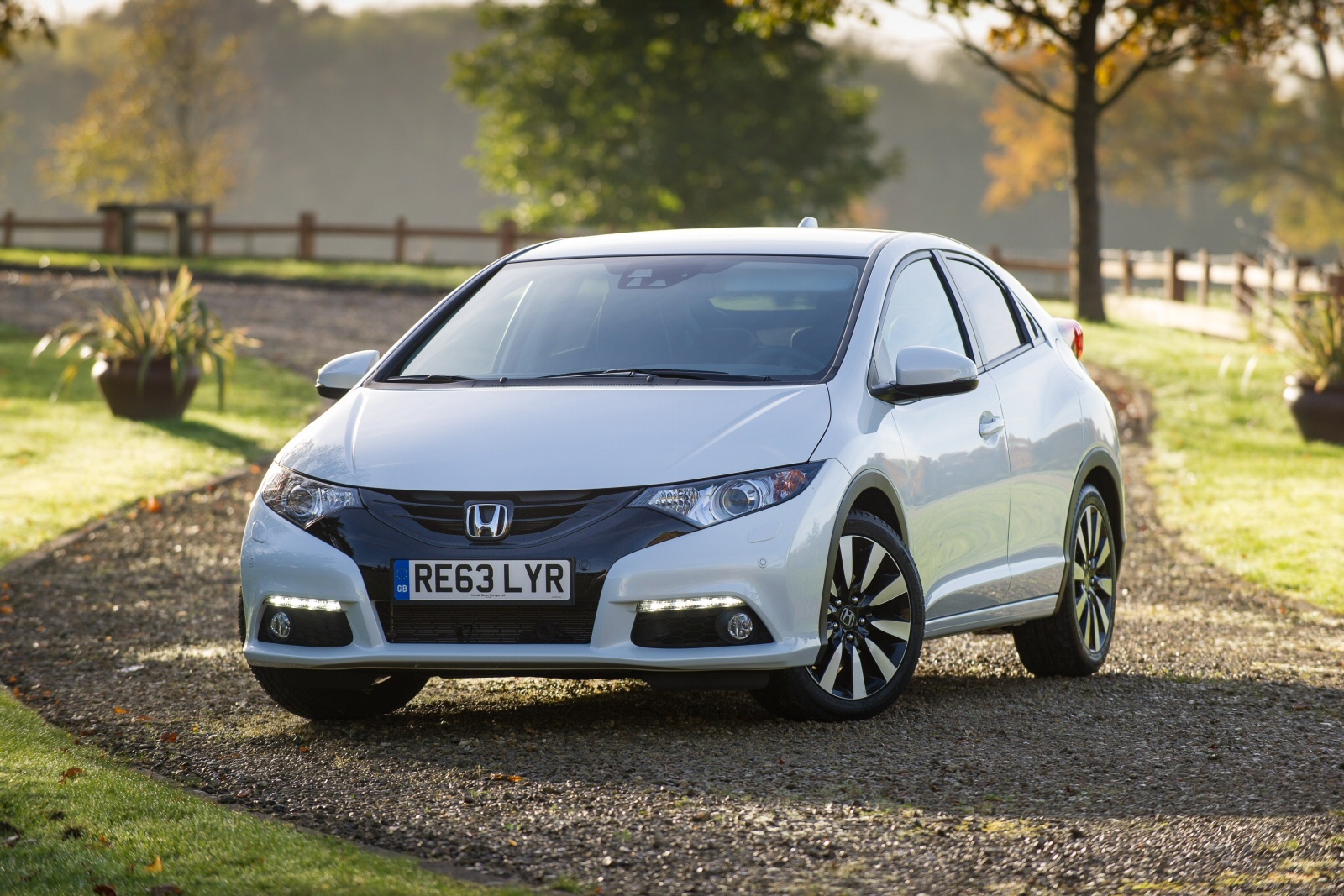Honda hasn’t exactly been at the forefront of diesel engine development. This time round the Civic gets a more advanced entry-level oil burner. Andy Enright reports
Just as the 2.2-litre engine has been thoroughly revised, this 1.6-litre diesel requires some fresh perspectives. It’s been designed to offer high performance and low emissions and goes about its job in a very Honda way. For a start, it’s extremely small and light for a diesel lump, weighing in at fully 47kg less than the 2.2-litre engine. It makes 118bhp at 4000rpm, which is impressive enough, but perhaps more interesting is the 221lb/ft of torque it can develop at just 2,000rpm.
The designers of this ninth-generation Civic wanted to keep the sporty and advanced elements of the car’s character but tweak them to express a more dynamic feel. The car is 20mm lower and 10mm wider than its predecessor, giving it a squatter, more purposeful stance. This ‘blended body’ features smarter aerodynamics, including a rear light cluster that works as an aerodynamic spoiler, managing air flow over the top and sides of the car. The interior is focused around the driver and, like the eighth generation car, features a split-level instrument binnacle. One area where clear strides could be made was in the perceived quality of the cabin. The old car featured quite a lot of scratchy hard plastics but this ninth generation model alters its approach to meet a far more demanding European customer base. Class leading boot space and versatile seating boost its credentials for family buyers.
Prices for this 1.6-litre diesel variant have been kept quite competitive, starting at just under £20,000 for the SE model, just over that figure for the plusher ES variant and a little over £23,000 for the top-of-the-range EX. The specification for this trio of Civics is identical to the equivalent 2.2-litre i-DTEC cars, but with the addition of revised 16-inch alloy wheels. The range-topping EX has also been treated to a few more goodies in the shape of front and rear parking sensors, an auto-dimming rear view mirror and DAB digital radio.
Standard equipment that’s new to this generation Civic range includes Honda’s Intelligent Multi-Information Display (i-MID) 5in dashboard screen which displays relevant driving details such as mpg, climate and audio settings. Other additions include a rear wiper, daytime running lights and a headlight-off timer that maintains illumination for 15 seconds after the car is locked. The entry-level SE trim also includes 16in alloy wheels, automatic air-conditioning and USB connectivity for compatible MP3 audio devices. The ES specification adds cruise control with a speed limiter, rear view parking camera, keyfob-operated windows and door mirror folding, plus auto up/down electric rear windows. Additional kit on ES models includes dual-zone air-conditioning, Bluetooth Hands Free Telephone (HFT), front fog lamps, auto headlights and wipers, leather steering wheel and gear knob, ambient interior lighting and six-speaker audio system.
We’ve come a long way in a short space of time. Honda’s 134bhp 2.2-litre diesel in the last shape Civic managed 53.3mpg and emitted 140g/km. This 1.6-litre unit isn’t quite as powerful, at 118bhp, but its economy and emissions figures are of a different realm. Honda claims an average of 78.5mpg and emissions of just 94g/km. That means free road tax and London congestion charge exemption, should you feel the need to experience the joy that is driving in the middle of the capital during working hours.
The belief that variable valve-timed petrol engines and then petrol/electric hybrids would satisfy customer needs better than diesel engines was one of Honda’s rare engineering mistakes. It’s taken the company a long time to buy into the philosophy of compression-ignition engines but it now seems to have grasped that if it’s to do well in Europe, it needs a diesel engine and a good one at that. In typical Honda fashion, it’s built two, but this 118bhp 1.6-litre i-DTEC is the one that’s going to shift the big numbers. I can see that some old-school dyed in the wool Hondaphiles may see this as a dilution of the way the company once was. But there’s no point in living in the past.
Anyway, the ninth-generation Civic as a whole is already a distinctly pragmatic vehicle, utilising technology that works. All right, so some feel that Honda was at its best when the engineers didn’t listen to the marketing people and just produced extreme vehicles nobody else was capable of. I’m not of that school. While it’s true that this Japanese brand built some amazing cars as a result, these days that’s a recipe for financial ruin. So Honda’s become a bit more mainstream, a little more expedient? As this Civic 1.6 i-DTEC shows, sometimes there’s genius in exactly that.
Facts and figures
Model: Honda Civic 1.6 i-DTEC
Price: Just under £20,000
Engine: 1.6-litre diesel
Performance: 0-62mph in 10.5seconds; top speed of 129mph
Economy: 78.5mpg
CO2 rating: 94g/km
